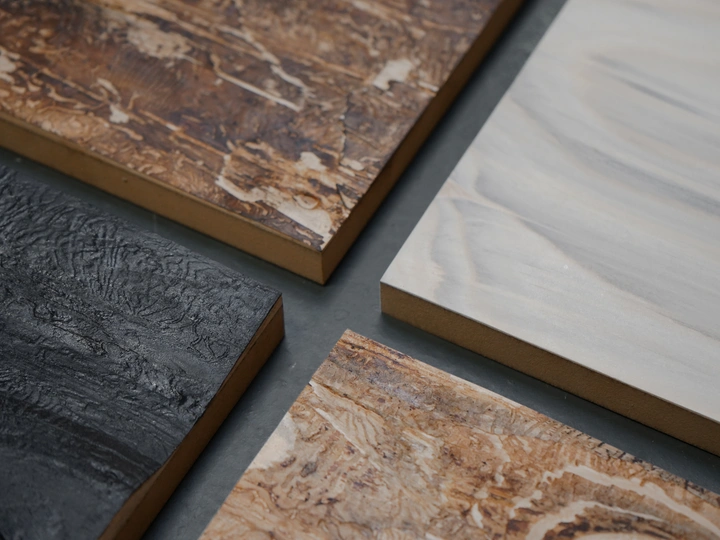Fretting Traces

I work at the intersection of design, material research, and storytelling. My practice is grounded in a research-based approach that aims to understand local contexts and embrace complexity. I believe design is not only a tool for problem-solving, but also a space for reflection, dialogue, and long-term engagement.
Since 2023, I have been collaborating with wood scientists at the Fraunhofer Institute for Wood Research (WKI) on my ongoing project Fretting Traces – The Ornamental Potential of Bark Beetle Wood. I also hold a guest researcher position at the Max Planck Institute of Colloids and Interfaces in the Department of Biomaterials. My work explores how climate-induced material transformations can become a medium for critical and aesthetic inquiry.
I am currently pursuing a Master’s degree in Product Design at Weissensee Kunsthochschule Berlin. I completed my Bachelor in Industrial Design at the University of Applied Sciences Berlin, with a semester at the Bezalel Academy of Arts and Design.
I have exhibited and shared my work through workshops formats at institutions including Futurium Berlin, the Kunstgewerbemuseum Berlin, and the GRASSI Museum Leipzig.
I use media depending on context - working with material, text, and film. Through this plural approach, I aim to open up questions and allow for multiple perspectives.
Europe’s forests are in crisis. Between 2018 and 2022, over 20% of Germany’s national spruce supply became unscheduled calamity wood due to bark beetle infestations - an ecological and economic rupture exposing the fragility of monoculture forestry under climate stress. The European Spruce Bark Beetle emerges not as a simple pest, but as a symbol of the failure of human-centric, profit-driven resource use.
This project began as a personal response to the loss of the forest I grew up in. What started as grief turned into inquiry: could the visible traces of destruction - feeding galleries and blue stain fungi - hold aesthetic, cultural, and material value? Through interdisciplinary research with foresters, national park workers, cultural historians, and scientists, I explored how this wood might be reimagined.
The resulting veneer collection, developed with Fraunhofer WKI, reveals intricate patterns left by the beetle. These are not defects, but narratives etched into the material - an invitation to rethink value and resource use in forestry.
I also developed a printing technique and workshop format called Printers and Engravers, referencing the beetle’s name Ips typographus. Participants engage with the beetle’s lifecycle through hands-on print experiments, linking craft, ecology, and education.
Through these workshops, exhibitions, and a short film, the project invites public dialogue on ethical forestry and post-extractive material futures.
Looking ahead, the work will expand into product and architectural applications to promote calamity wood’s design potential. Future inquiries include fungal pigments, similar crises in other species and regions, and new perspectives on the history and future of architected forests. This project engages spatial culture as a way to address environmental collapse through critical, sustainable design.